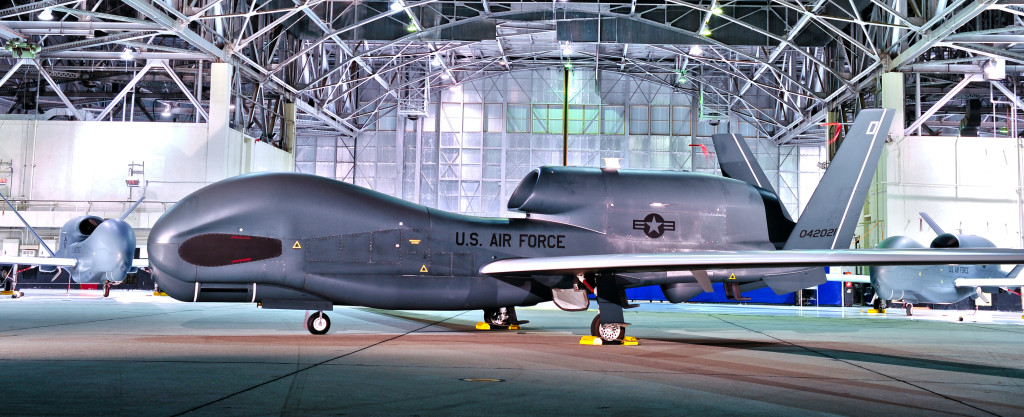There are “no technical reasons” preventing the Air Force from migrating its prized Senior Year Electro-Optical Reconnaissance System multispectral imagery sensor from the manned U-2 spy plane to the remotely piloted RQ-4 platform, according to the intelligence-gathering system’s prime contractor UTC Aerospace Systems.
The company, which owns Goodrich, the original manufacturer of SYERS, told Inside the Air Force that it has held informal meetings with Air Force officials to discuss the possibility of migrating the sensor to the RQ-4 Global Hawk as the service looks for ways to retire the entire U-2 Dragon Lady fleet.
The currently deployed SYERS-2A sensor is a prized asset within the Pentagon’s intelligence, surveillance and reconnaissance community, placing it at the center of the long-running debate over whether to use the U-2 or RQ-4 platforms for high-altitude IRS missions.
“There are no technical reasons preventing such a migration to the Global Hawk,” UTC Aerospace Systems’ spokeswoman for ISR and Space Systems Julie Mears said in a Feb. 27 statement to ITAF. “The key question is meeting the needs of the warfighter in terms of sensor range, clarity and capability, as well as combatant command requirements, national requirements and public law.”
During his fiscal year 2015 budget request preview last week, Defense Secretary Chuck Hagel said the Air Force intends to retire its aging fleet of 33 U-2s in favor of the Global Hawk, rather than continuing to operate both. This is a major about-face for the service that tried to retire its entire Global Hawk fleet in favor of the U-2 platform as recently as FY-13.
Proponents of the U-2 cite the aircraft’s reliability and superior sensors as reasons to keep it flying, but Air Force officials last week tried to build a more compelling case for keeping the Global Hawk flying instead.
Air Force Secretary Deborah Lee James told a Bloomberg Defense Summit on Feb. 26 that the Global Hawk costs less to operate, and she said the Air Force will invest in the platform to make it “more on par” with the U-2. Speaking at the same conference, Vice Chief of Staff Gen. Larry Spencer offered the universal payload adaptor, produced internally by the Global Hawk’s original manufacturer Northrop Grumman, as a way of allowing the SYERS sensor and other U-2 payloads to be migrated to the Global Hawk.
The estimated cost for this solution is $487 million, according to Air Force spokeswoman Maj. Mary Danner-Jones. “The USAF has not demonstrated the universal payload adaptor on the RQ-4,” Danner-Jones said in a Feb. 28 response to ITAF. “Analysis was done pursuant to a 2013 congressional response. That report indicated the estimated cost for this effort is $487 million and would take approximately three years to develop, integrate and test, followed by two years of production and retrofit of 18 GH Block 30s.
“Additionally, the FY-14 budget appropriated $10 million to study the integration of U-2 sensors on RQ-4,” she continued.
In her statement, Mears said UTC Aerospace Systems is prepared to support the Air Force in whichever direction the Defense Department and Congress decides is appropriate for “a high-altitude ISR transition plan that mitigates the risks to the warfighter.”
“No other imagery sensor has parity with SYERS to meet these requirements,” Mears said. “The timeline for transition to Global Hawk is a question we can’t answer, but is something Congress will consider in the FY-15 defense budget deliberations.”
Source: Inside the Air Force

